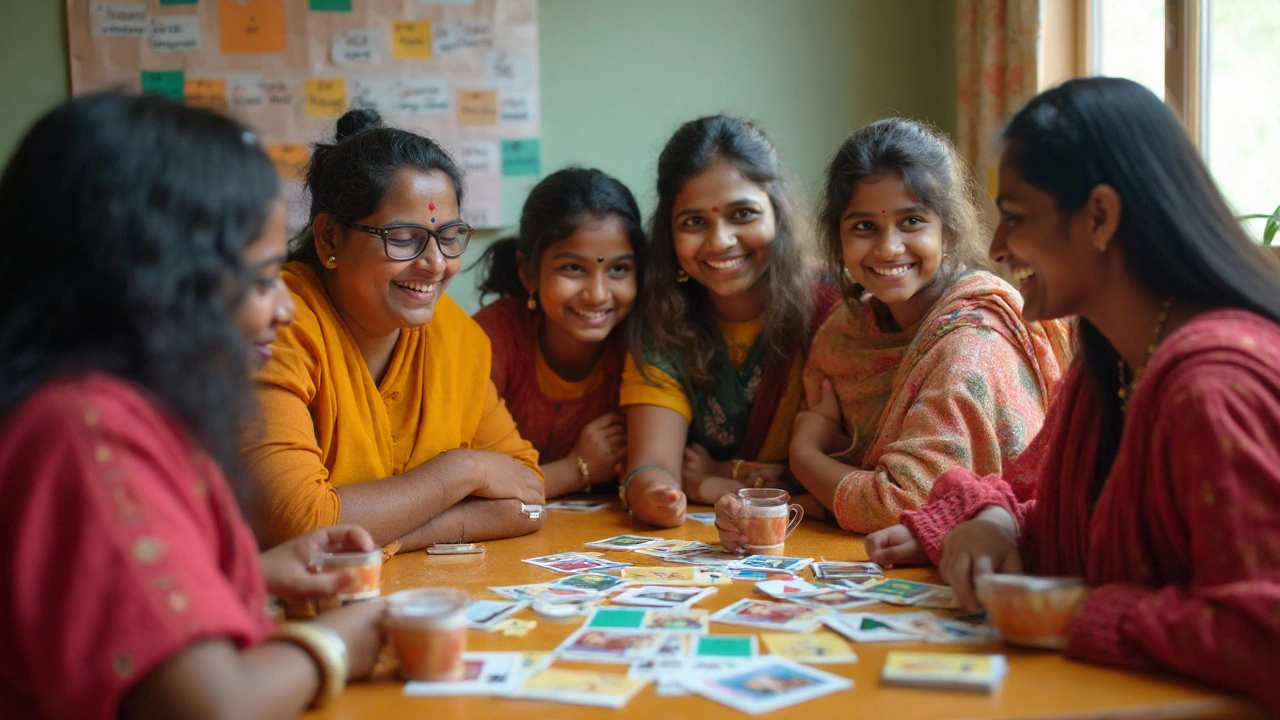
If you think teaching English is all about dry grammar rules or perfect pronunciation drills, you’re missing the real heartbeat of the classroom. The excitement in an adult beginner’s eyes when they order a coffee in clear English—after weeks of stumbling—is priceless. Here in Melbourne, I’ve seen everything from fresh-off-the-plane grandparents who’ve never said ‘hello’ to local small business owners who only knew their own language a year ago. There’s nothing boring or easy about this—teaching English to adults at the beginner level is like learning to play guitar with your non-dominant hand: awkward, sometimes hilarious, but every small breakthrough is huge.
Understanding Adult Beginners: What Makes It Different?
Kids soak up language like sponges because they’re fearless about mistakes and don’t care who’s watching. Adults? Not so much. Here’s where the real challenge starts. Most adult beginners have good reasons for learning English—maybe a job, their kids’ education, or just wanting to fit in. But they tote around baggage full of anxiety and embarrassment. They worry about sounding silly, getting things wrong, or being the slowpoke in class. The fear of failure can be crippling if you don’t address it head-on.
Adult learners don’t like to waste time. They want solutions that make sense for their real lives. A retiree from China in my neighbourhood wanted to read menus and make doctor’s appointments without help from her grandkids. Another mate, a Brazilian tradie, needed to argue with suppliers and understand Aussie banter. They both started from zero, but their goals looked nothing alike. So, one-size-fits-all lesson plans just fall flat.
Adults also bring something special: life experience. They have stories, skills, opinions, and street smarts. They might not know the verb ‘to be,’ but they build homes, drive trucks, raise families, or run businesses. Respect goes a long way here. Tap into their experiences to make every lesson matter. Even if a student doesn’t recognize English numbers, they know how to count money. Use that! Build on what they know to teach what they don’t.
Barriers mess things up. Some adults learn differently. Some have memory issues, bad eyesight, or trouble holding a pen. Don’t expect them to learn like school kids. Let them move at their own pace. Be patient. Don’t talk down or baby them—nobody wants that. And leave out long lectures. Real conversation sticks better than rules written on whiteboards.
Building a Safe Learning Space
Before you open the textbook, you’ve got to create a space where embarrassment isn’t king. Adults need to trust you. They won’t risk making silly mistakes unless they feel safe. Set ground rules—everybody makes errors, and that’s how learning works. Share your own language fails. My son Rishabh once giggled for weeks when I accidentally told his teacher I felt ‘lively in my bottom’ instead of ‘tired in my legs’ during my Hindi lessons. Grown men and women relax when they realise even teachers get confused.
Seating matters. Spread people out so they don’t have to shout. Pair up students who speak different first languages. If everyone speaks the same background language, they’ll default to that when things get tough. Mixing things up forces them to use English (or a bit of sign language and creative guessing), and that’s pure gold for learning.
Encourage questions. I once had a woman who didn’t know how to ask ‘What does that mean?’ for the first month. Every session I taught her the phrase, and slowly everyone picked it up. Suddenly, hands shot up every few minutes. That’s when the real learning began—when people stopped worrying about looking dumb.
Little victories matter. Celebrate when someone strings together a full sentence, even if it’s clunky. Make sure the tone is upbeat, not stiff. If learners see you laugh at your own mistakes, they’ll feel okay about messing up too. That’s how you build momentum.
Games work wonders. Adult students love bingo, flashcards, and team competitions as much as kids. A round of ‘Two Truths and a Lie’ using brand new vocabulary is way more effective than another worksheet. Last term, my group couldn’t get enough of charades with action verbs. The energy pushed them to practice aloud instead of sitting still, quietly dreading another pop quiz.

Practical Techniques That Actually Work
Forget about memorizing thousands of rules right away. Start with what’s useful from day one. Survival English is the golden ticket—think greetings, numbers, directions, ordering food, handling money, asking for help. Teaching language in real-life situations flips the switch from theoretical to practical. If a lesson doesn’t answer ‘When would I actually use this?’, toss it aside. Teach how to introduce yourself, explain where something hurts, say ‘sorry, I’m learning.’ Real examples make all the difference.
Visual support is a lifesaver for beginners. I once taught a lesson on shopping by bringing in empty cereal boxes, tinned tomatoes, and fake plastic money. Hands-on stuff lodges information deep in the brain. Use props, photos, and drawings as conversation starters. Point at things around the classroom, gesture wildly, mime actions—whatever it takes. Progress doesn’t come from pages of written translations; it comes from physical, memorable moments.
Repeat, repeat, repeat. Adults often feel babyish about practicing the same phrase over and over, but repetition actually cements new words. Make your voice light and say, ‘We’re going to sound like parrots today, but this is the fastest way.’ Put new phrases on sticky notes around the house. Encourage learners to talk to their kids, read packets at the supermarket, or even talk to the dog in English (sounds silly, but it works).
Small group activities work far better than lectures from the front. Break the class into pairs for mini dialogues—order coffee, ask how someone’s day is going, role-play a doctor’s visit. Anything where learners can immediately use what you’re teaching. This works especially well for shy people who don’t want to perform in front of a crowd. Rotate partners each time so nobody gets stuck feeling like the weakest link.
Give clear, simple instructions—one step at a time. Don’t pile on complex grammar explanations in week one. Focus on chunks of language: short phrases, common questions, helpful answers. ‘Where is the toilet?’, ‘How much is this?’, ‘Can you help me?’ are worth their weight in gold.
Technology is your friend, even for beginners. Don’t ignore simple audio recordings, translation apps, or YouTube videos with subtitles. I once had my class listen to basic podcasts on the tram, then practice the new phrases in pairs when they got to class. The touch of a smartphone can bring instant pronunciation help or visual cues for words they’re stuck on—which builds independent learning over time.
Keeping Motivation Alive and Progress Visible
Nothing kills motivation faster than feeling like you’re stuck in the mud. Adults want to see movement. Set achievable, short-term goals. Celebrate when someone gives directions to a lost tourist, orders a meal without help, or successfully fills out a supermarket loyalty form. Mark progress visually on a wall chart or in a group notebook. Shiny certificates don’t impress everyone, but seeing a physical list of the phrases or dialogues mastered lights a magical fire.
Link lessons to personal interests. I once had a student—an avid fisherman—who hated basic textbooks. But when we rewrote shopping dialogues to cover ‘buying fishing gear’ and swapped restaurant menus for fish market price signs, his grammar and word bank exploded. The same goes if someone wants to understand cricket broadcasts, cook recipes, or follow local footy. Personal connection is rocket fuel for memory.
Don’t overload. Adults have work, families, rent to pay. Give manageable homework that fits into daily life—maybe record themselves saying new words before bed, or spend ten minutes chatting with an English-speaking mate once a week. Pile on too much, and they won’t do any of it.
Keep parents and families in the loop where you can. If their kids see mum or dad studying (and struggling!), it normalises effort and mistakes. Encourage learners to practice at home with family, even if it starts with just a few new words each night around the dinner table. Mutual encouragement does wonders for confidence.
Patience rules. Some learners rocket ahead, while others crawl at a snail’s pace. Don’t let the fast ones get bored or the slower ones lose heart. Let everyone see progress in their own way. Never say, ‘It’s easy.’ If it was, they wouldn’t need you at all. Remind your group how far they’ve come—look back at clumsy first-day introductions and celebrate the full sentences they can use now. That’s the real reward.
If you want to teach English adults and see real results, focus on what matters: trust, relevance, practice, and celebrating small wins. The journey isn’t smooth, but every awkward phrase and nervous first conversation is progress. In my classes, it’s not about being flawless—it’s about being understood and having a laugh along the way.
